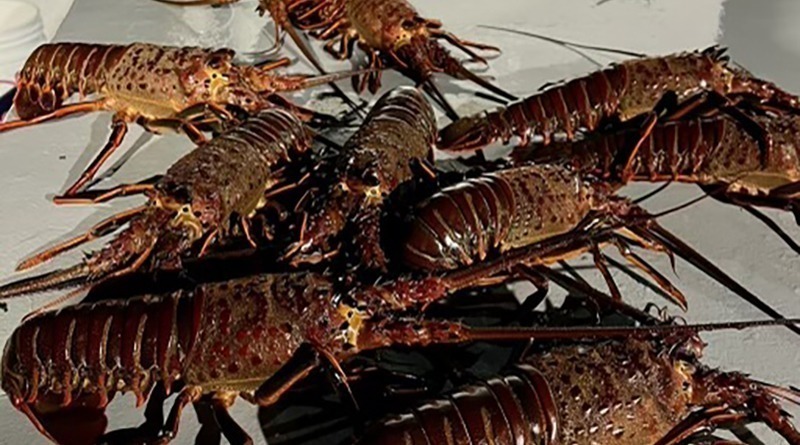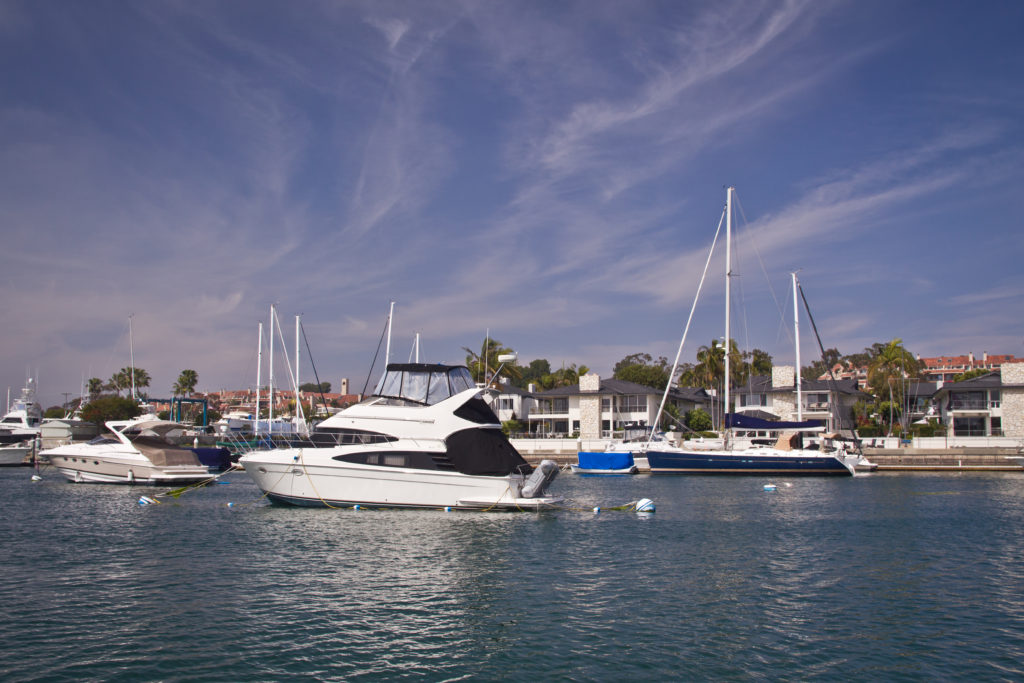by Bill Morris & Log Staff
On a hot summer day out on the water, it’s comforting to have ice-cold beverages and food stored safely in a refrigerator aboard our boat. Depending on the size of the vessel, the configuration of its galley and the amount of battery power available, there’s a wide variety of refrigeration options from which to choose. Four types of refrigeration are available for coastal and offshore boats: air-cooled, water-cooled, keel-cooled, and the latest new option on the market, a small, free-standing ice maker.

One of the resources boaters frequently turn to when selecting and installing marine refrigeration is Cruiser Services, a company founded by lifelong cruiser Rich Boren. With years of offshore cruising experience aboard Third Day, a 36-foot Pearson ketch, Boren learned firsthand how critical reliable refrigeration and efficient marine systems are to the cruising lifestyle. Cruiser Services now serves as the North American distributor for OzeFridge Marine Refrigeration, providing energy-efficient refrigeration solutions built specifically for the demands of life at sea.
Air-Cooled Refrigeration
If you’re navigating in relatively warm areas — such as right here at home on the Southern California coast — a standard, air-cooled, top-loading refrigerator should stay at or below 40-degrees F. This is the generally accepted threshold for all refrigerators, including the one in your kitchen ashore. Cycling every 10 minutes or so, depending on the ambient temperature, this is safe enough to store milk and raw meat. At an average 5 amps during cycling, that comes to 20 amp hours per day. A single, 100-watt solar panel generating half its rated power over a 10-hour period produces 42 amps, double the required power for a refrigerator over a 24-hour period.
One way to reduce electrical power usage and maintain a more constant level of cooling is to install an air-cooled cold plate, or holding plate, which is a thin, flat compartment with an evaporator tube in a bath of coolant that freezes at a point below the freezing point of water. When the coolant rises to a certain temperature, the compressor automatically kicks in to freeze the solution again. Even in a warm, tropical climate, a cold plate can keep the fridge cold while cycling only a few hours a day, which is a huge advantage over fridges with standard evaporators.
One potential disadvantage of a cold plate is the greater amount of amperage used while cycling. Over a 24-hour period, though, you can expect to cut total fridge amperage by half. Technautics of Escondido, California, claims their CoolBlue holding plate system can chill a 7-cubic-foot freezer-refrigerator at 24 amp hours per day, significantly less than conventional refrigeration. With the holding plate installed in the typical sailboat fridge measuring 3 or 4 cubic feet, we can expect even greater amperage savings.
Water-Cooled Systems
A water-cooled fridge is an alternative to the typical, air-cooled fridge that comes stock in many new yachts. The water-cooling process involves removing heat from the condenser tubes in the same manner as a radiator on an automobile engine, applying a comparatively cool liquid to a hot surface, drawing out heat far faster than an air-cooled system. A water-cooled fridge requires the installation of a water pump, a raw water filter, input and discharge hoses, an above-waterline discharge thru-hull fitting, various plumbing parts and a 12-volt switch.
The water-cooling pump is usually quite small, using only an amp or so of power, but the overall savings in daily amperage can be in excess of 25 percent, more than offsetting its meager amperage draw and offering a significant advantage over a conventional air-cooled boat fridge. Reducing the 90 amp hours of an air-cooled system by 25 percent gives us roughly 68 amp hours per day, a savings of 22 amp hours. However, a diet of 68 amp hours per day is still a huge demand on a typical coastal boat’s reserve power, far greater than that of any other single system on the vessel.
For cruisers planning longer passages or extended time away from marinas, companies like Cruiser Services offer refrigeration options tailored to these demands. OzeFridge units, distributed by Cruiser Services, focus on energy efficiency and reliability — key considerations for boaters who rely on solar, wind, or limited generator power to meet their electrical needs offshore.
Keel-Cooled Fridge
If you’re looking for an even more efficient refrigeration design, consider a keel-cooled fridge. Keel cooling uses fresh water to cool the condenser coils in the same manner as a standard water-cooled system, except that coolant passes through a heat exchanger attached to the outside of the hull. It is called a “keel” cooler because of its location close to the keel to ensure constant submersion. Both Frigoboat and Isotherm offer keel-cooled refrigerator kits with hydrodynamically shaped heat exchangers to reduce drag.
A self-contained fresh water cooling system eliminates the need for a strainer, since no seawater passes through the hull. One downside to a keel cooler is the need to inspect and replace zincs regularly on the bronze heat exchangers. Also, while sitting in an anchorage without a constant current of water running under the hull, the water immediately surrounding the heat exchanger can warm up and reduce its cooling capacity. Owners of keel-cooled fridges are generally quite pleased with the superior cooling of this straightforward system, even in tropical anchorages.
Some boaters may be worried about the growth of barnacles and algae on the bronze heat exchanger, claiming external heat exchangers cannot be painted with antifouling. However, Rob Warren of Coastal Climate Control in Annapolis, the main U.S. distributor of Frigoboat, pointed out, “You will lose a little refrigeration performance by painting [a heat exchanger], but not enough that you will notice. I made some tests several years ago, and I found that it was better to have one painted than for it to be really heavily fouled.”
Portable Ice Makers
Some coastal boaters need only a small amount of ice, dispensing with the complications involved with installation of a permanent refrigeration unit. If all you need is ice for margaritas, consider buying a portable ice maker. You can plug the small machine into the AC inverter, drawing less than 3 amps to produce 2.5 pounds of ice in less than 30 minutes—in the middle of the ocean. As long as the ambient temperature is below 90 degrees F, you can make enough ice to chill several cans or bottles of liquid in the Igloo.
The current, standard, portable ice maker is manufactured in China and sold through such brand names as Dometic, EdgeStar, Emerson, Magic Chef, MaxiMatic, NewAir and Whirlpool. The ice maker should be used only in settled conditions or while at anchor to keep it as level as possible. Also, remember you are working with both water and 110V AC power, so make sure the extension cord from the DC-AC inverter is dry and safe from foot traffic.
There’s a refrigeration system for every type of boat carrying a 12V house battery and a power inverter. If you review the possibilities and discuss options with your marina friends, you should have little trouble finding a fridge meeting your needs and your boat’s available space and electrical system.
Many cruisers also turn to companies like Cruiser Services for advice when selecting marine refrigeration systems that align with their vessel’s space, power availability, and cruising plans. From efficient OzeFridge units to guidance on installation, Cruiser Services has become a resource for boaters preparing for both coastal cruising and bluewater adventures.
Consider the options, compare notes with fellow boaters, and enjoy cold drinks and chilled food on your future boating adventures. For additional information about marine refrigeration, watermakers, and climate control solutions for cruisers, visit www.cruiserservices.com.






